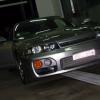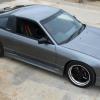Announcements
-
Similar Content
-
Latest Posts
-
Yeah. I usually go by the torque specs. I forgot that Nissan recommends 1386b sealant on that thread, still can buy it on ebay actually.
-
Umm.... He attached it to his 2021 update post. Don't need the link. It is stored on the forum.
-
I've always just put that plug in dry (ie no sealant), it is a tapered thread so do it up "fairly" tight but not VFT and it should be fine
-
I think that will requires @jamesnorman93 to check their link, or alternatively someone else with time to run the PDF through an OCR tool
-
Are you suggesting that the expert fabricator's work is not as good as Sinco's? Oh, eeby deeby for glup shitto! Eeby deeby for glup shitto for one thousand years!
-






Recommended Posts
Create an account or sign in to comment
You need to be a member in order to leave a comment
Create an account
Sign up for a new account in our community. It's easy!
Register a new accountSign in
Already have an account? Sign in here.
Sign In Now